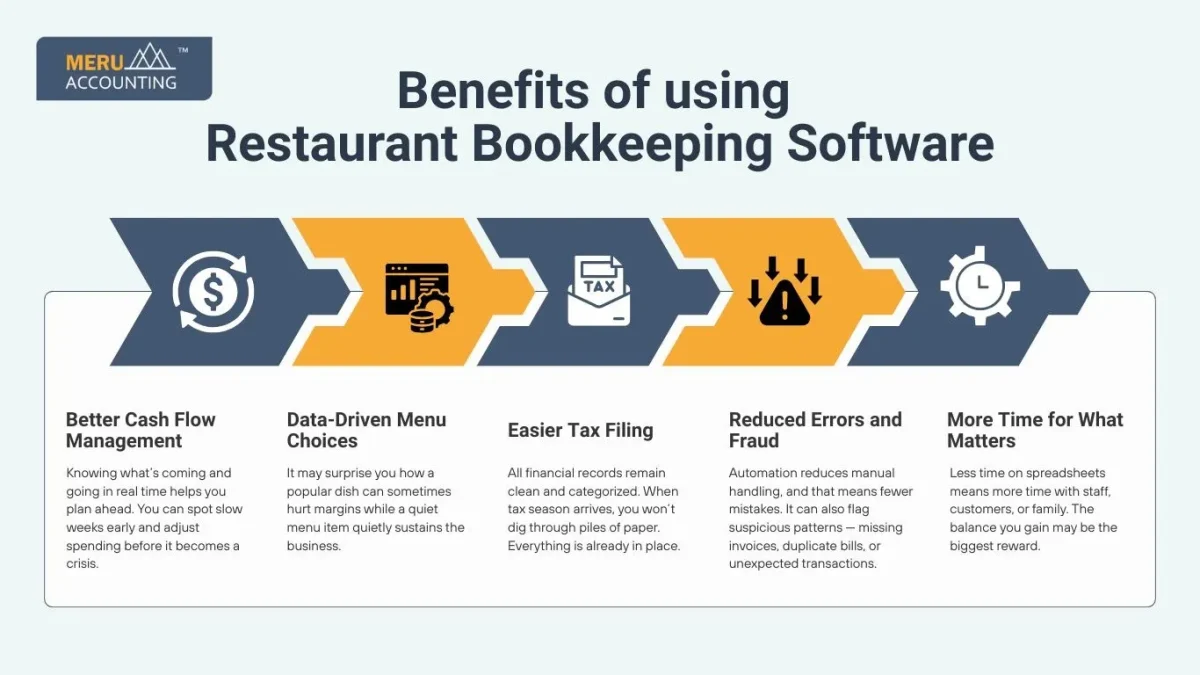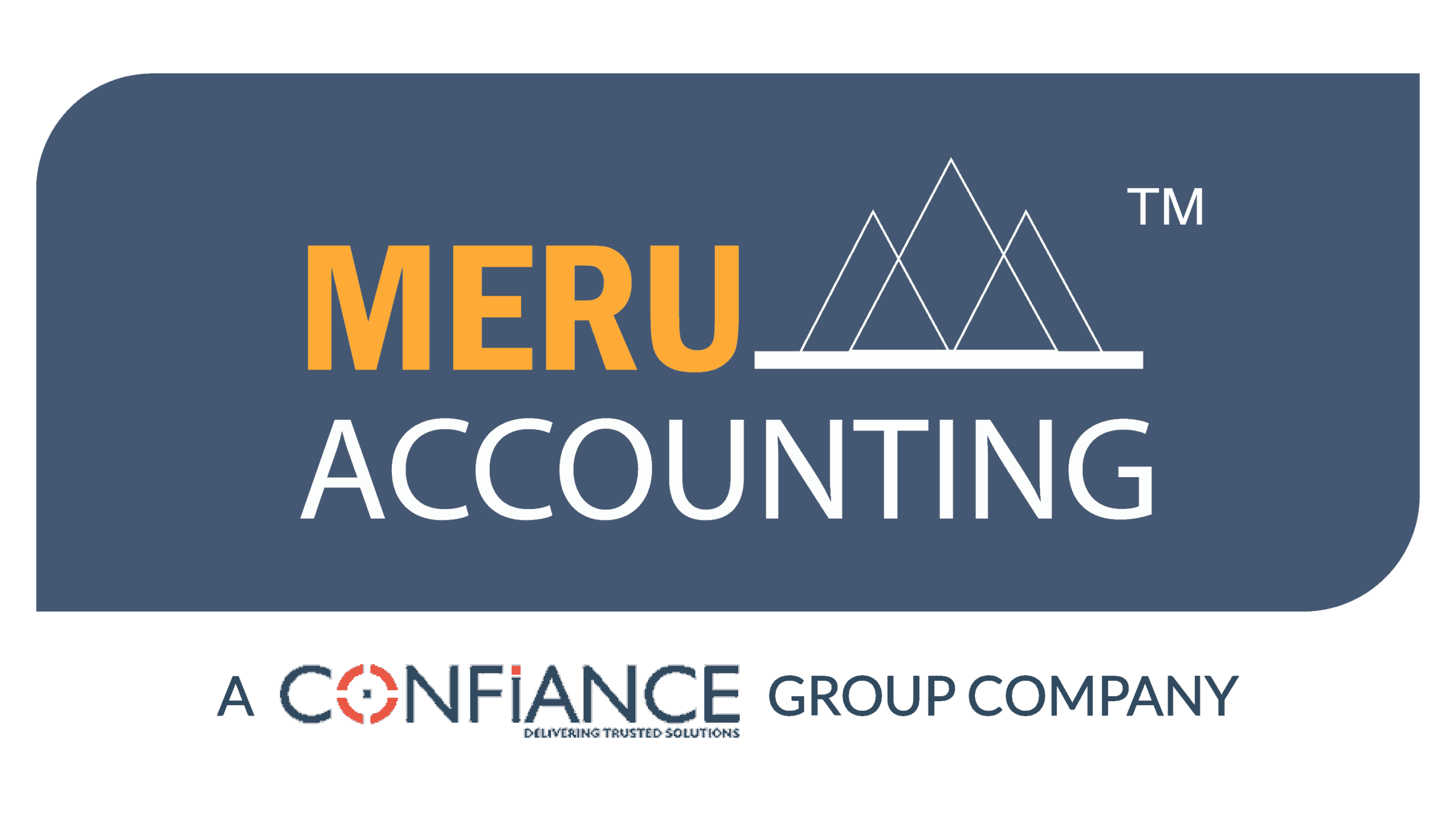Using Restaurant Bookkeeping Software to Track Inventory and Expenses
Running a restaurant means endlessly checking stock, managing bills, and tracking what was sold last night. Sometimes, you may encounter stock out in your restaurant without any estimates. Such surprises can lead to bad customer experience. A restaurant bookkeeping software can easily solve this by tracking all your inventory and expenses. In this blog, we will see what a restaurant bookkeeping does and how it can help in inventory and expense tracking.
The Daily Struggle of Restaurant Finances
If you’ve ever peeked into the back office of a restaurant, you know what chaos looks like. Bunch of receipts, endless spreadsheets, and a growing list of unpaid bills.
Money comes in from dine-ins, online orders, catering events — but it also goes out faster through food costs, wages, maintenance, and countless small expenses that seem harmless until they add up.
Many owners try to manage it all with notebooks or Excel sheets. That may work for a while. But as the restaurant grows, those manual systems start breaking down. Data gets lost and balance sheets don’t match. And before you know it, the business starts feeling like it’s running on fumes. Hence, having a good restaurant bookkeeping software can save you from such burnout conditions.
What Is Restaurant Bookkeeping Software?
Restaurant bookkeeping software is a digital tool built to record, track, and organize every financial detail of your restaurant. It can manage invoices, monitor expenses, reconcile bank statements, and even track inventory without manual typing. Think of it as a personal accountant who never sleeps and never misplaces a single number.
Most of these systems connect directly with your point-of-sale (POS) system, supplier records, and bank feeds. Once set up, they may automatically pull transactions, match invoices, and highlight trends. You don’t have to calculate anything line by line. You can just glance at a dashboard and see how your restaurant is doing financially.
Why Tracking Inventory Matters So Much
Inventory is the invisible heart of your restaurant. Every plate that leaves the kitchen is a mix of ingredients that cost money. When that balance is off — when too much is bought or too much is wasted — profits start slipping away quietly.
But keeping up with inventory manually can drain time. Counting boxes, updating spreadsheets, and matching invoices can take hours. And errors are almost guaranteed. Hence, you definitely need software to fill this gap. Here’s why tracking inventory is essential in a restaurant business:
1. Real-Time Inventory Tracking
With bookkeeping software, inventory can be updated in real-time. Each sale from your POS automatically reduces stock levels. Each supplier order adds new quantities.
You may no longer need to count manually every night. You can just check your dashboard to know what’s running low or what’s sitting unused.
Imagine knowing that your kitchen is about to run out of olive oil even before the chef asks. That’s the comfort such a system can bring.
2. Linking Purchases and Usage
Another benefit is how it connects the dots. The system can show you not just what was bought but also how much of it was actually used or sold.
You might find that certain ingredients are overstocked or wasted often. Maybe lettuce spoils too fast, or some sauce bottles disappear too quickly.
That insight can help you adjust purchase patterns and reduce unnecessary spending.
3. Understanding True Food Costs
Restaurant owners often guess how much a dish costs to make. But guessing can lead to trouble.
Restaurant bookkeeping software can calculate actual costs per dish using ingredient data and purchase records.
It might show you that your best-selling pasta dish costs more than you think. With that information, you can adjust prices, portion sizes, or suppliers to maintain healthy margins.
Tracking Expenses with Restaurant Bookkeeping Software
Expenses in a restaurant business are like – a small repair bill, a surprise delivery fee, or a new subscription that no one remembers approving. These small costs build into a mountain over time. Hence, you need to track these expenses using a dedicated restaurant bookkeeping software. Here’s how you can do it:
1. Automatic Expense Categorization
The system can pull expenses directly from your connected accounts and assign them into neat categories — food, labor, utilities, rent, maintenance, and so on.
You can instantly see which area eats most of your money each month.
This breakdown can be powerful. Maybe your electricity cost is rising every quarter, or ingredient prices have climbed beyond comfort.
Instead of hunting for reasons later, you spot patterns early.
2. Receipt Management Made Simple
Every restaurant has that one drawer full of old receipts. Some faded, some missing dates.
Modern restaurant bookkeeping software can scan, store, and match those receipts with transactions automatically.
You can upload a photo from your phone, and the system will attach it to the correct expense. No paper clutter, no lost proofs, no stress during audits.
3. Vendor Payment Tracking
Most restaurants deal with multiple suppliers. Keeping track of who got paid, who’s waiting, and what discounts were missed can be a mess.
But the right software can manage this without effort. It can remind you when payments are due, apply early payment discounts, and even prevent duplicate invoices.
This not only saves time but may also protect cash flow.
Relation Between Inventory and Expenses in Restaurants
Inventory and expenses often live in separate worlds. But in truth, they are deeply connected when you consider them for restaurants. When your software integrates both, you get a complete picture of your cost chain — from raw ingredients to the final dish sold.
That connection helps you answer key questions like:
- Are rising costs due to supplier prices or waste?
- Is inventory loss affecting profits?
- Can menu adjustments balance the margins?
By viewing all financial activity together, you may see trends that manual bookkeeping can never reveal.
How Automation Changes Everything
Once automation takes over, you spend less time counting and more time managing.
Reports update automatically. Numbers balance themselves. You can plan menus, manage staff, or even take a break without worrying about falling behind on paperwork.
Restaurant bookkeeping software can be the silent partner that keeps the rhythm steady while you focus on growth.
Benefits of using Restaurant Bookkeeping Software
Here are some benefits of using restaurant bookkeeping software:
1. Better Cash Flow Management
Knowing what’s coming and going in real time helps you plan ahead. You can spot slow weeks early and adjust spending before it becomes a crisis.
2. Data-Driven Menu Choices
Since the software ties costs to sales, you can see which dishes truly earn profit and which don’t.
It may surprise you how a popular dish can sometimes hurt margins while a quiet menu item quietly sustains the business.
3. Easier Tax Filing
All financial records remain clean and categorized. When tax season arrives, you won’t dig through piles of paper. Everything is already in place.

4. Reduced Errors and Fraud
Automation reduces manual handling, and that means fewer mistakes. It can also flag suspicious patterns — missing invoices, duplicate bills, or unexpected transactions.
5. More Time for What Matters
Less time on spreadsheets means more time with staff, customers, or family. The balance you gain may be the biggest reward.
Choosing the Right Restaurant Bookkeeping Software
Not all systems fit every restaurant. Some are built for small cafes, others for multi-location chains. Choosing wisely can make a big difference. Here are a few things you may look for when picking the right one:
1. Integration with POS and Banks
Your software should connect easily with your POS system, supplier records, and bank feeds. That’s how it captures real-time data without manual entry.
2. Simple Interface
If it takes a month to learn, it’s not worth it. Look for something that feels natural from day one.
3. Mobile Access
Owners are rarely at their desks. A mobile-friendly system means you can track reports, payments, or expenses from anywhere.
4. Reporting Features
A good restaurant bookkeeping software can create visual reports — showing costs, trends, and profits at a glance. These reports can guide smarter decisions.
5. Inventory Linking
Ensure the system can link purchase orders with stock usage. That’s where you’ll truly see cost leaks and savings.
Mistakes to Avoid When Using Bookkeeping Software
Even great tools fail when used carelessly. Some owners make small errors that later become major headaches. Here are a few mistakes you must avoid:
1. Ignoring Regular Updates
Software that’s not updated can miss new tax rules or security patches. Always keep it current.
2. Forgetting to Reconcile
Even with automation, reconciliation is important. Review monthly reports to confirm all numbers align.
3. Overcomplicating the Setup
Start small. Add features gradually as you grow comfortable. Too much at once can confuse rather than help.
4. Not Backing Up Data
Always store backups in the cloud or an external drive. Accidents happen, and data is precious.
Real-Life Case Study
A local café once struggled with rising food costs. The owner thought suppliers were overcharging. After switching to restaurant bookkeeping software, she realized the real issue — over-ordering and waste.
The system showed that they were buying double the amount of dairy compared to what was actually used. Once corrected, her monthly expenses dropped by almost 20 percent.
Sometimes the truth hides in numbers that no one was watching.
When you use restaurant bookkeeping software, your financial picture may become clearer. You can easily predict your expenses and inventory with accuracy. As a restaurant owner, you will get a little more time to enjoy serving customers with the food you love. At Meru Accounting, we have helped many restaurant owners around the world with their inventory and expense tracking. Contact us now to get help with the top restaurant bookkeeping software for your inventory and expense management.
FAQs
- What is restaurant bookkeeping software?
It’s a digital system that records and organizes a restaurant’s financial data automatically. - Can restaurant bookkeeping software track food inventory?
Yes, most systems can connect with POS data to update ingredient usage in real time. - Do restaurant bookkeeping software replace an accountant?
Not fully, but it makes an accountant’s job faster and more accurate. - How can restaurant bookkeeping software help with expenses?
It categorizes, stores, and reports every expense automatically for easy tracking. - Can small cafes use restaurant bookkeeping software too?
Yes, many versions are designed for small or single-location restaurants. - Do restaurant bookkeeping software work with multiple suppliers?
It can manage invoices, payments, and purchase orders from all your suppliers. - What reports can restaurant bookkeeping software create?
It can show profit and loss, inventory trends, and spending summaries. - Does restaurant bookkeeping software help during audits?
Absolutely, since all receipts and transactions stay organized digitally. - Can restaurant bookkeeping software reduce food waste?
Yes, by tracking ingredient usage and overstocking trends. - Is it safe to store financial data online?
Most systems use encryption and secure servers to protect your data. - Can restaurant bookkeeping software track labor costs too?
Yes, many include payroll and time tracking modules. - Will restaurant bookkeeping software alert for low stock?
Some systems can send notifications when items run below a set level. - Can restaurant bookkeeping software integrate with POS systems?
Yes, most connect directly for automatic data syncing..








